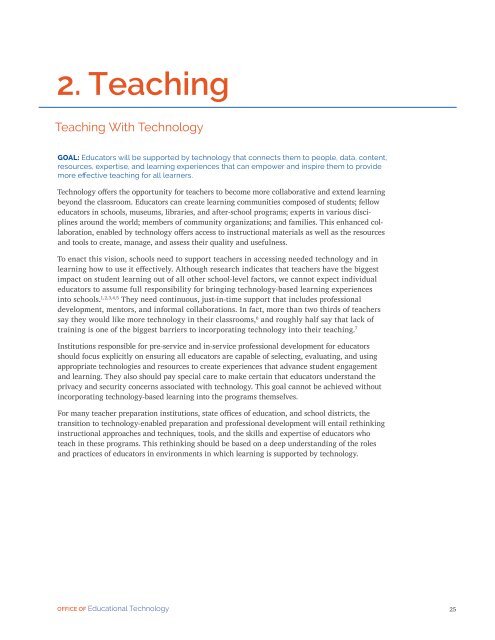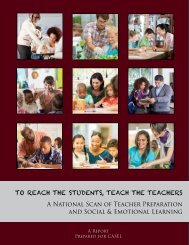Future Ready Learning
7m3sdJ
7m3sdJ
Create successful ePaper yourself
Turn your PDF publications into a flip-book with our unique Google optimized e-Paper software.
2. Teaching<br />
Teaching With Technology<br />
GOAL: Educators will be supported by technology that connects them to people, data, content,<br />
resources, expertise, and learning experiences that can empower and inspire them to provide<br />
more effective teaching for all learners.<br />
Technology offers the opportunity for teachers to become more collaborative and extend learning<br />
beyond the classroom. Educators can create learning communities composed of students; fellow<br />
educators in schools, museums, libraries, and after-school programs; experts in various disciplines<br />
around the world; members of community organizations; and families. This enhanced collaboration,<br />
enabled by technology offers access to instructional materials as well as the resources<br />
and tools to create, manage, and assess their quality and usefulness.<br />
To enact this vision, schools need to support teachers in accessing needed technology and in<br />
learning how to use it effectively. Although research indicates that teachers have the biggest<br />
impact on student learning out of all other school-level factors, we cannot expect individual<br />
educators to assume full responsibility for bringing technology-based learning experiences<br />
into schools. 1,2,3,4,5 They need continuous, just-in-time support that includes professional<br />
development, mentors, and informal collaborations. In fact, more than two thirds of teachers<br />
say they would like more technology in their classrooms, 6 and roughly half say that lack of<br />
training is one of the biggest barriers to incorporating technology into their teaching. 7<br />
Institutions responsible for pre-service and in-service professional development for educators<br />
should focus explicitly on ensuring all educators are capable of selecting, evaluating, and using<br />
appropriate technologies and resources to create experiences that advance student engagement<br />
and learning. They also should pay special care to make certain that educators understand the<br />
privacy and security concerns associated with technology. This goal cannot be achieved without<br />
incorporating technology-based learning into the programs themselves.<br />
For many teacher preparation institutions, state offices of education, and school districts, the<br />
transition to technology-enabled preparation and professional development will entail rethinking<br />
instructional approaches and techniques, tools, and the skills and expertise of educators who<br />
teach in these programs. This rethinking should be based on a deep understanding of the roles<br />
and practices of educators in environments in which learning is supported by technology.<br />
OFFICE OF Educational Technology<br />
25



